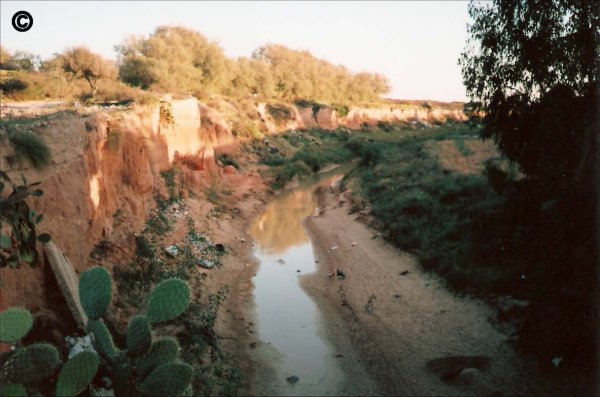Mountains, Rivers and the Coastal Zone in Asia: Environmental Management and Community Integration into the 21st Century.
Azra Meadows and Peter S. Meadows
Biosedimentology Unit, Division of Environmental and Evolutionary Biology, Institute of Biomedical and Life Sciences, University of Glasgow,
Glasgow G12 8QQ, Scotland, U.K.
Shiga University, Japan. International Symposium. 1998.
Integrated Environmental Management: Development, Information, and Education in the Asian-Pacific Region. Symposium Volume. Chapter 4. pp 49-76. Eds. Itakura, Y., Eades, J.S., D’Itri, F.M., Kawashima, M., Endoh, S. & Kitamura, H. Lewis Publishers, Boca Raton, USA.
Abstract
Mountains, rivers, and coastal zones in Asia represent one of the most important interrelated environmental systems on a global scale, and they play a central role in controlling the use of land and water and their resources by urban and rural human communities. Mountain environments are extremely variable and contain many endangered ecosystems and species. They also have wide ranges of altitude, temperature, rainfall, soils, and levels of human population. Farming usually consists of small terraced holdings on steep slopes. In some areas farmers have holdings at different levels. This allows them to use different species of plants and animals. Rivers are routes for travel and trade, and have high quality agricultural land nearby if irrigation is used. Rivers are particularly important for providing agricultural land in the Asiatic region, as many countries are tropical or subtropical and continuous supplies of surface or ground water are vital. However many areas show desertification, salinisation and waterlogging. The coastal zone is defined in this paper as extending 10 kilometres landward and seaward of mean low tide level. In the Asian region, coastal zones contain large centres of human populations, important fisheries and mineral resources, and high biodiversity in mangrove swamps and coral reefs. Here, new marine biotechnology using transgenic or polyploid species and novel mangrove seeding techniques have much potential. Many coastal zones in Asia are low lying and prone to flooding, and are affected by hurricanes, cyclones and seismic activity either directly by earthquakes or indirectly by tsunami. Sea level rise caused by global warming may have major impacts. We review the environmental problems facing these major habitats and their human communities, and suggest management measures into the 21st century. We then identify a number of integrated programmes concerning mountains, rivers and the coastal zone that will involve both urban and rural communities, and emphasise the need for the use of information technology in educational programmes - particularly in a rural context.
© Copyright Azra and Peter Meadows
| Type of Environment | Impact | Process | Output | Environmental Management |
|---|---|---|---|---|
| Mountains | Natural Impact Human Impact |
Global warming, Deforestation, |
Water discharge, Soil erosion, |
Prevention of build-up Reforestation, |
| Rivers | Natural Impact
Human Impact |
Flooding Water logging, |
Soil particulates, Abandoned agricultural Pollutant discharge, |
Flood control defences, Construction of outfall drains. Pollution control. |
| Costal Zones | Natural Impact Human Impact |
Global warming, Industrial and domestic |
Flooding of low lying Decline in fisheries. Loss of nursery grounds |
Coastal defences. Weather predictive models, Pollution monitoring. Managed resource exploitation. Conservation protection. |

© Photograph Copyright Azra and Peter Meadows
Wadi Turgat, near Garabuli, Libyan coastal zone, November 2007.
These Libyan wadis lead from the southern mountains to the coast. They flood during the rainy season and discharge into the Mediterranean.
Environmental management and community involvement: conclusions and recommendations for action in the 21st century
One of the most important requirements in the 21st century on mountains, rivers, and the coastal zone is for coherent multidisciplinary environmental programmes of research and education involving an integrated and holistic approach. This will involve both urban and rural communities.
A major problem which faces developing countries is high population growth and energy consumption. In order to attain a sustainable environment, developing countries need to strike a balance between economic growth, efficient use of resources and the control of population growth. Developed nations on the other hand should reduce their over-use of energy and consumption of natural resources in order to promote and share global sustainability.
There is also an urgent need for integrated education and research involving conservation, management, protection and restoration. The educational aspect of this will include the education of politicians and of members of urban and rural communities. There will be a need for the development of new information systems for remote continuous monitoring of the environment. The integrated education and research programmes should include:
1: Biodiversity of endangered ecosystems, conservation of endangered habitats and species, databases of flora and fauna.
2: Catastrophic flood hazards and flood control.
3: Deforestation and its effects on erosion and land usage.
4: Desertification, salinization, and waterlogging.
5: Slope stability on hillsides, landslides, and earthquakes.
6: Environmental consequences of damming.
7: Geological and biological history of river drainage systems.
8: Impact of sea level rise.
9: Mountain and river basin minerals, sediments, stratigraphy, tectonics and formation.
10: Archaeology of ancient sites of civilisation: early man including Stone Age sites (earliest evidence of Man in Asia, c.2,000,000 B.P.). These target areas require to be identified country by country.
Finally, it is vital to develop public awareness of environmental issues and to include public participation in environmental programmes, particularly in the developing nations of Asia. This should extend from the highest political level to members of the most remote rural communities. The key issue is to bridge the gap between urban and rural communities, and develop an interacting environment for a sustainable nation. At a rural level modern information technology is often not available, either due to lack of resources or due to remoteness. In these communities, small-scale adult education programmes should be introduced which use information technology to address matters such as health, farming and water use. Such programmes will enhance the quality of life of isolated communities.

